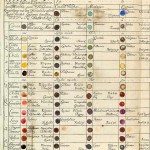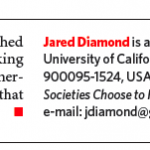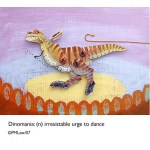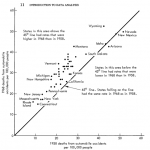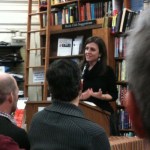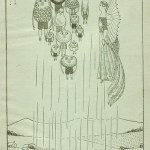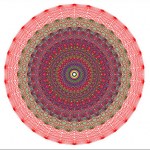Books & Essays
Alan Jacobs finds a quote that beautifully expresses why I don't want a Kindle, and why I wish the iPad were a stylus-friendly Mac tablet:
Of course, you can't take your pen to the screen. When it comes to annotating the written word, nothing yet created for the screen compares to the immediacy and simplicity of a pen on paper. The only effective way to respond to text on screen is to write about it. The keyboard stands in for the pen; but it demands more than a mere underline or asterisk in the margin. It demands that you write.
That, of course, was the reason for the pen all along: it's a…
From Richard Waller, "A Catalogue of Simple and Mixt Colours with a Specimen of Each Colour Prefixt Its Properties"
Philosophical Transactions of the Royal Society of London, vol. 6, 1686/1687 (London, 1688)
Noting the lack of a standard for colors in natural philosophy, and inspired by a similar table published in Stockholm, Richard Waller indicated that his "Table of Physiological Colors Both Mixt and Simple" would permit unambiguous descriptions of the colors of natural bodies. To describe a plant, for example, one could compare it to the chart and use the names found there to identify…
I was reading through some back issues of Harper's and came upon an article by Rivka Galchen about climate change and meteorological engineering. I'm sick to death of reading about climate change, but I was immediately hooked by this article - her perspective is fascinating, and she is an excellent writer who draws on a wide range of interdisciplinary elements. Equal parts science writing, memoir, self-reflection, tongue-in-cheek mockery, and elegy to her late father, meteorologist Tzvi Gal-Chen, this is a hell of a good article.
[F]unding far-fetched projects can be justified for reasons…
A little Sunday reading: "Mr. Penumbra's Twenty-Four-Hour Book Store," one of several wonderful short stories by San Francisco writer Robin Sloan. It's sort of like magical realism for techies:
Back at Supply and Demand. The air is crackÂling with wi-ââfi; Kat and I are havÂing the only spoÂken conÂverÂsaÂtion in the entire place.She's wearÂing the same red-ââand-ââyellow "BAM!" t-ââshirt as yesÂterÂday, which means a) she slept in it, b) she owns sevÂeral idenÂtiÂcal t-ââshirts, or c) she's a carÂtoon character--all of which are appealÂing alternatives.
I don't want to come out and conÂfess…
--A great NYT article on science museums and cabinets of curiosities:
This antic miscellany is dizzying. But there are lineaments of sustained conflict in the apparent chaos. Over the last two generations, the science museum has become a place where politics, history and sociology often crowd out physics and the hard sciences. There are museums that believe their mission is to inspire political action, and others that seek to inspire nascent scientists; there are even fundamental disagreements on how humanity itself is to be regarded. The experimentation may be a sign of the science museum's…
While I was on blogcation, I got an email from the watchdog group Stinky Journalism, complaining that prominent science author and professor Jared Diamond (Collapse, Guns, Germs and Steel) was in the hot seat again. (You may remember that Stinky Journalism broke the story about the lawsuit against Diamond arising from his New Yorker piece on tribal violence in New Guinea; I blogged about the fallout of the controversy here and here.)
Really? I thought; what has Diamond supposedly done this time? Here's the scoop from Stinky Journalism:
[In] the February 18 issue of the journal Nature . . .…
Polly Law's Word Project is a series of mixed-media illustrations representing obscure words like dasypygal and nidifice. Though Law has exhibited her work in galleries, she hasn't found a backer to publish them as a book. . . yet. So she's seeking help at the entrepreneurial startup Kickstarter.com:
The Word Project book will be a soft cover, 10"x10". Each piece will get its own spread accompanied by its meaning, pronunciation & an example of use. Since 2002 I have been raiding the attics, basements and dusty cupboards of the English language in search of intriguing, odd & obscure…
Update: welcome Consumerist readers! While I use my own experience to illustrate concerns about third-party online merchants, this post is mainly about the bigger long-term informational problems I see with reputation, reliability, and online communities. Please feel free to weigh in!
A few weeks ago, I caught a familiar story on the local news. A local citizen had written in to the news team with a request for help after a local furniture company sold them a defective living room set, and wouldn't give them a refund. The news team went to the business, who - wary of the potential public…
A quick follow-up to my mention of Edward Tufte last week: you should be aware that Edward Tufte's brief classic, Data Analysis for Politics and Policy, is available online as a PDF here. It's worth a skim in your spare time - and worth sharing with people who don't necessarily appreciate the limitations of statistics.
Last week, I braved a nasty sleety Cambridge evening to see Rebecca Skloot read from her excellent new book, The Immortal Life of Henrietta Lacks. I'm thrilled to tell you it's finally being released on Amazon tomorrow, so if you haven't already been to your local bookstore, go snag a copy (or enter to win one from Sb, through 2/23/10!)
In case you don't know the story, Henrietta Lacks was a young African-American mother who was stricken with a particularly invasive form of cervical cancer back in the early 1950s. She died within months, but her cancer cells remain alive today - millions of…
Year of the Tiger, 2010
Chris Jordan
Depicts 3200 toy tigers, equal to the estimated number of tigers remaining on Earth. The space in the middle would hold 40,000 of these tigers, equal to the global tiger population in 1970.
SEED has put together a slideshow of works by Chris Jordan, an artist I mentioned in last week's review of Visual Language (he did the Barbie doll breast image), and also in an October post on his photos of the tragic birds of Midway.
"I believe it is worth connecting with these issues and allowing them to matter to us personally, despite the complex mixtures of anger…
On Tuesday, Feb. 23, National Geographic Explorer will be devoting an episode to "Vampire Forensics." You can preview a brief clip below the fold, but I'll warn you now: it's not CSI. It's more scientific ("unfortunately this evidence is inconclusive" LOL) and less sexy (inexplicably, Emily Proctor is nowhere to be seen). Overall, the feeling I got from the clip was sort of "Wow, we're National Geographic Explorer, that's pretty great, but we really wish we were sexy, like CSI. Does this sinister music help?"
In conjunction with the Explorer episode, National Geographic is releasing a book…
Okay, so between vampires and zombies, the undead have officially conquered pop culture. It's not really new - I was fascinated when young by Michael Jackson's Thriller and Anne Rice's Vampire Chronicles - but it does seem a bit out of hand.
With the release of "Robin Hood and Friar Tuck: Zombie Killers," I feel like we have slalomed down the slippery slope marked by "Pride and Prejudice and Zombies," ducked under "Sense and Sensibility and Sea Monsters," and smacked a tree with our collective faces. From the synopsis:
Soon after 'twas apparent that the fate
Of all on Earth--the evil and the…
Virtual reality trailblazer Jaron Lanier has a somewhat curmudgeonly, critical new book out called You Are Not a Gadget: A Manifesto. Here's an excerpt:
If you want to know what's really going on in a society or ideology, follow the money. If money is flowing to advertising instead of to musicians, journalists, and artists, then a society is more concerned with manipulation than with truth or beauty. If content is worthless, then people will start to become empty-headed and contentless. The combination of hive mind and advertising has resulted in a new kind of social contract. The basic idea…
The famous apple-tree story, from a manuscript by one of Newton's friends:
"After dinner, the weather being warm, we went into the garden and drank tea, under the shade of some apple trees. [Newton] told me, he was just in the same situation, as when formerly, the notion of gravitation came into his mind. It was occasion'd by the fall of an apple, as he sat in contemplative mood.'Why should that apple always descend perpendicularly to the ground,' thought he to himself. 'Why should it not go sideways, or upwards? But constantly to the earth's centre? Assuredly, the reason is, that the earth…
Scibling Rebecca Skloot's new book, The Immortal Life of Henrietta Lacks, is coming out next month. To celebrate I thought I'd dredge one of my favorite pieces of hers out of the archive: "Fixing Nemo."
Dr. Helen Roberts was about to make the first incision in what should have been a standard surgery -- a quick in-and-out procedure -- when she froze. ''Bonnie,'' she said, turning to her anesthesiologist, ''is she breathing? I don't see her breathing.'' Roberts's eyes darted around the room. ''Grab the Doppler,'' she told her other assistant. ''I want to hear her heart. Bonnie, how's she doing…
A Journey Round My Skull uncovered this DISTURBING children's book about anthropogenic talking fruit who appear to be suffering from a contagious respiratory disease.
I'm not sure why I find it so disturbing, but I do. It makes me feel like I'm on some sort of mind-altering substance. (I know many children's books can have that effect - and the Spongebob movie, too - but for some reason this fruit book is just creepier than usual).
Is anyone else reminded of Henry Darger's work?
Check out more illustrations at A Journey Round My Skull. You can use them to frighten vegetarian children.
Back in October, there was an interesting article by Peter Hessler in the New Yorker about Chinese painters who make a living painting western scenes (Venice is popular) that they neither recognize nor are particularly interested in. Unfortunately the article is subscription-only, but if you have access it's worth a read. If not, you can check out a brief audio slideshow here.
The article raises some discomfiting questions about how America is perceived by the outside world, and how concepts we view as central to our culture are utterly meaningless when seen from outside. First, our small-…
As I've observed before, many scientists, especially physicists, seem to have a strong belief that the fundamental truths of nature are inherently elegant and beautiful. This new NPR story on symmetries fits right into that scientific-beauty-is-truth frame - down to the requisite Keats quote at the end:
The point here, as Tennant says, is that in the weird quantum world, under certain precise conditions, an order in nature emerges that was previously unknown. "When I started out I really expected that quantum systems would be somehow more complicated and somehow more confusing than the…
I like this little article by Sean Carroll for Edge:
I wanted to write that the Internet keeps people honest. The image of thousands of readers bursting into laughter gave me pause.
So let me put it this way: the Internet helps enable honesty. Many of us basically want to be honest, but we're fighting all sorts of other impulses -- the desire to appear clever or knowledgeable, to support a point we're trying to make, to feel the satisfaction of a rant well-ranted. In everyday conversation, when we know something specific about the expertise and inclinations of our audience, these impulses may…
